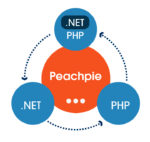PHP developers have a new way to track problems in their applications. Zend Server 5.0, released earlier this month, adds black box-like debugging capabilities to allow developers to track down issues within their PHP applications. The new version also adds a job queue for scheduling the execution of incoming user actions.
Eldad Maniv, vice president of products and marketing at Zend, said that the new debugging capabilities in Zend Server 5.0 are “very similar to black box recording. When a request goes to Zend Server, everything is recorded in that execution path. If something in a production environment misbehaves, then that is recorded, captured and a developer can look at it offline without needing to recreate the problem.”
Maniv said that Zend Server’s recording capabilities are “effective in environments where you cannot use debuggers. It can also be used in a development and testing environment. It speeds up the development process.”
The second major new feature in Zend Server 5.0 is the addition of a job queue. “It gives developers the ability to build an application where there is a need to respond very quickly, but there is a lot of processing that does not need to happen in real time,” said Maniv. “A request comes in, logic in the server addresses the thread, then queues off a PHP path for the PHP job to occur. This speeds up response time while still allowing these jobs to happen.”
Zend’s influence in the PHP community was recently challenged by Facebook’s release of HipHop for PHP, a compiler that builds PHP into C++. Facebook has also released a host of additional PHP tools, including parsers, lexors and a command-line interface for PHP.
Mike Gualtieri, senior analyst at Forrester, didn’t think that Facebook’s release of PHP tools will take away from Zend’s position as the top PHP company.
“What Facebook has done with HipHop is not relevant to most developers,” he said. “I think, short term, it’s going to make people feel more comfortable with PHP, knowing that Facebook has done that, knowing that there are people making it scale to that size. Google is a great example; they have all these different tools out there, but enterprises want a consistent set of tools. They don’t want to be confused by all these tools and figuring out if they will be supported in the future or not.”






